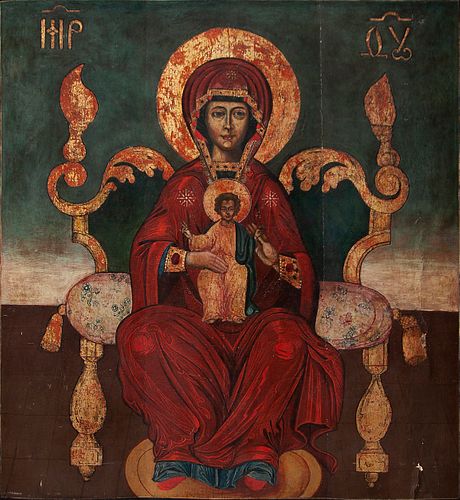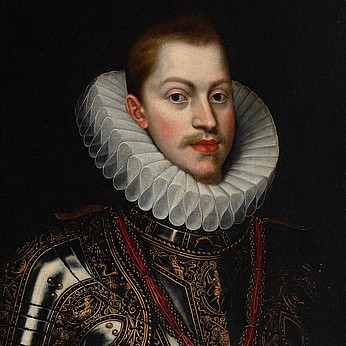Russian school, workshops of the Old Believers, end of XVIII-pps.XIX century. "The Mother of God of Covadonga" also known in Russia as "The Spanish M
Lot 78
About Seller
Setdart Auction House
Carrer Aragó 346
Barcelona
Spain
Setdart Subastas was born in 2004 and is currently the first online art auction in Spain with solidity, prestige and reliability guaranteed by our more than 60,000 users. Setdart has a young, dynamic and enterprising team ready to successfully manage the purchase and sale of art works through custom...Read more
Estimate:
EUR€10,000 - EUR€12,000
$10,416.67 - $12,500
Absentee vs Live bid
Two ways to bid:
- Leave a max absentee bid and the platform will bid on your behalf up to your maximum bid during the live auction.
- Bid live during the auction and your bids will be submitted real-time to the auctioneer.
Bid Increments
| Price | Bid Increment |
|---|---|
| EUR€0 | EUR€10 |
| EUR€200 | EUR€25 |
| EUR€500 | EUR€50 |
| EUR€1,000 | EUR€100 |
| EUR€3,000 | EUR€200 |
| EUR€5,000 | EUR€500 |
| EUR€10,000 | EUR€1,000 |
| EUR€20,000 | EUR€2,000 |
| EUR€50,000 | EUR€5,000 |
About Auction
By Setdart Auction House
Nov 24, 2021
Set Reminder
2021-11-24 09:00:00
2021-11-24 09:00:00
America/New_York
Bidsquare
Bidsquare : Old Masters, Day 1
https://www.bidsquare.com/auctions/setdart-auction-house/old-masters-day-1-7873
Setdart Auction House sofia@setdart.com
Setdart Auction House sofia@setdart.com
- Lot Description
Russian school, workshops of the Old Believers, end of XVIII-pps.XIX century. "The Mother of God of Covadonga" also known in Russia as "The Spanish Mother of God". Tempera on wood. Measurements: 109 x 98 cm. According to tradition, the icon of the "Spanish Virgin" appears in the Spanish territory, and dates back to the eighth century associated with the victories of the Asturian king Pelayo over the Saracens thanks to the intercession of the Virgin. The peculiarity of the icon is that the Virgin with the child appears on a characteristic throne, very decorative. This typology is known in Russia from the first decades of the 18th century, through a literary work, where the iconographies of all the miracles of the Virgin are described, including the western ones, previously unknown in the Russian Empire. From the 18th century all the icons of the enthroned Mother of God were called "Spanish". However, the original version of the "Spanish" icon is characterized by the raised hands of the Mother of God and a double blessing of the Child Jesus. The hieratism of the seated Virgin, the symbolism of the colors, the absence of contrasts between light and shadow, indicate that we are before an ancient icon, from a period in which this Marian typology is popularized outside its territory. The large size of the icon indicates that it must have been made for ecclesiastical use, since small icons were usually commissioned for domestic use. This spectacular icon corresponds to the traditional canon, although with slight modifications, since the figures do not raise their hands in a double blessing. It should be noted that this typology of Marian icons allows variations within the canon. In the canonical icon the Mother of God is represented seated hieratically, on the throne, she is the center of attention of the icon, as much by her central location, as by her size and decorative character. The Child, in the lap of the Mother, is shown majestic, and adopting the gesture of blessing. Both characters appear nimbus, but the dominant gilding is combined with a certain illusionistic intention in the location of the figures in space, another element that makes explicit the stylistic contagion with the West.
- Shipping Info
-
In-house shipping available. Please inquire at admin@setdart.com.
-
- Buyer's Premium



 EUR
EUR CAD
CAD AUD
AUD GBP
GBP MXN
MXN HKD
HKD CNY
CNY MYR
MYR SEK
SEK SGD
SGD CHF
CHF THB
THB















